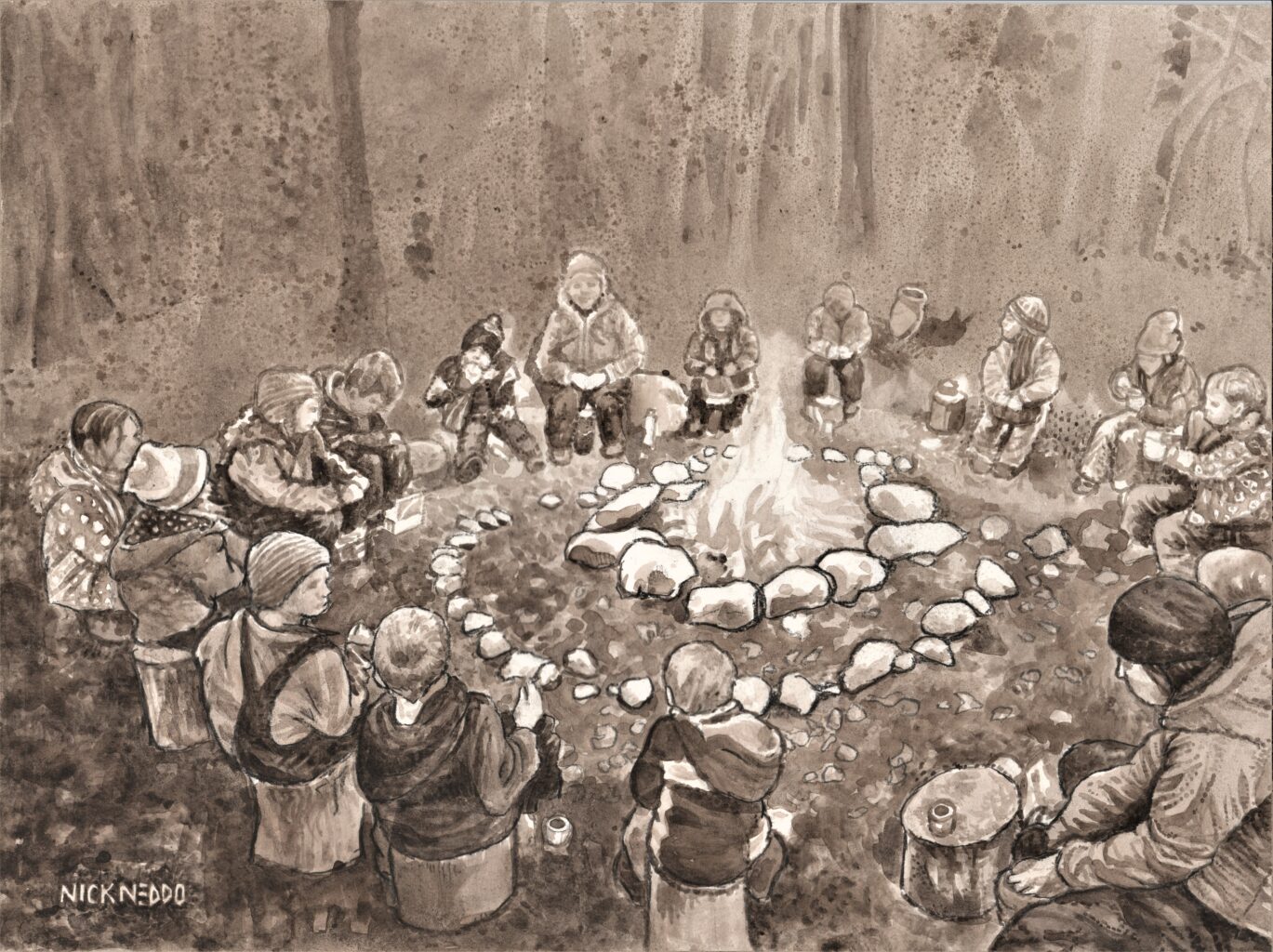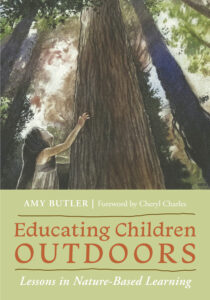Lessons in Nature-Based Learning

by Emily Seiffert, Deputy Director
I sat down recently with Amy Butler, NBNC’s former Director of Education, to talk about her book, Educating Children Outdoors: Lessons in Nature-Based Learning, just published by Cornell University Press. Amy founded NBNC’s ECO (Educating Children Outdoors) program more than 14 years ago; today we partner with 14 public schools, helping more than
1,500 students annually to learn outdoors and develop lasting relationships with the natural world. Here are some excerpts from our conversation:

This book offers a starting point for people looking to teach outdoors, but for you it’s perhaps more of a culmination point. Tell us how it came to be.
When I was little, I played outside a lot — that was where I thrived. I worked for many years in the environmental education field, and then went back to school in 2007 for my teaching license. I quickly realized that working five days per week in a building wasn’t going to be for me — and being inside most of the time isn’t a great way for lots of kids to learn, either. While working at Twinfield Elementary School, I started experimenting with ways to meet children’s unique learning styles and their growing need for stronger social and emotional connections. I remember saying back then, “I’m going to write a book about this someday.”
Meanwhile, two teachers at Montpelier’s Union Elementary School, Theresa Giffin and Mary Catherine Reed, were noticing that incoming Kindergarteners, over the years, were increasingly having trouble self-regulating and were also increasingly unfamiliar with playing and learning outside. They asked for my help in 2009, and the program that became ECO was born and was soon helping kids learn and thrive. In the fall of 2011, ECO expanded to Moretown Elementary School’s Kindergarten.
2011 was when Tropical Storm Irene caused catastrophic flooding in Moretown and across Vermont, just as the school year was beginning — what was it like to launch a program in a place that had just experienced a natural disaster and whose school building was closed for months?
It was intense, and hard, and ultimately transformative. We helped establish learning routines that the Moretown school utilizes to this day. The most amazing thing to witness was these Kindergarteners – who had all experienced their village being seriously damaged,
and several of whom had seen their homes ruined by floodwaters — using their time in the woods to process big emotions. They were constructing their world with sticks — creating miniature villages out of sticks — and then flooding and rebuilding them. Moretown Teacher Pam Dow writes about this in the book, reflecting on the bigger work happening for children as they process trauma, and how the ECO routines helped the community navigate not just the aftermath of Irene but since then the COVID pandemic, the December, 2023 flooding, and other challenges.
I remember reading Pam’s piece in draft form — it’s powerful. Who were your other co-conspirators?
This book has an unusual structure, where I’m the primary author, but really I’m the book’s midwife, because various lessons and reflections were contributed by 22 NBNC staff and public school teachers like Pam. The book’s creation was supported by the Cotyledon Fund and by David Sobel and Ellen Doris from Antioch University’s Early Childhood Program. The writing and publishing were supported by Sarah Galbraith, Linda Mirabile, and Cornell University Press; and by Nick Neddo, who contributed the beautiful illustrations. Like the ECO program itself — inspired and manifested by students, teachers, parents, and administrators — this book is a testament to the power of collective action.
Who will read and use this book?
New teachers and those strengthening their outdoor teaching skills will find inspiration in the stories and incorporate the lessons in their teaching. Learning communities can use it to create outdoor programs of their own, aligned with Common Core and Next Generation Science Standards. Nature centers can use it as a blueprint to launch their own similar programs. ECO sparked a period of tremendous growth for NBNC by turning the traditional environmental education model of hosting field trips on its head — instead offering a year-round partnership program embedded at area schools.
What’s next for you, and how do folks learn more?
I’ve been co-teaching a nature-based leadership course through Antioch University. This spring/summer I’m teaching at two In Bloom conferences, and then for the second time leading a reforestation trip to Costa Rica for teens. Folks can learn more, and contact me about speaking and teaching engagements, at www.AmyButlerVermont.com.
Order your own copy of Educating Children Outdoors: Lessons in Nature-Based Learning for pick up at NBNC here or stop by our lobby to purchase one any time we’re open!

